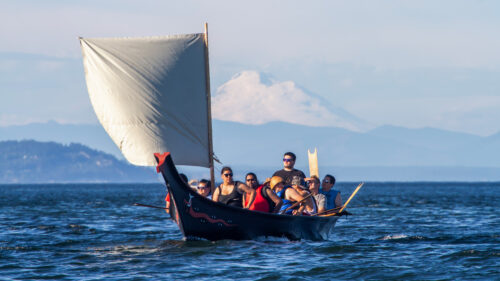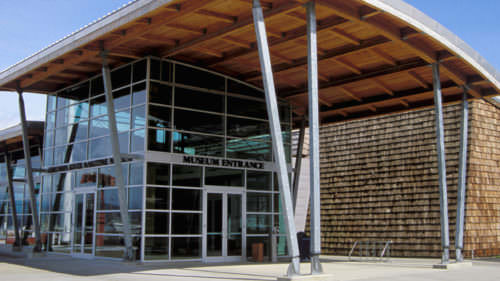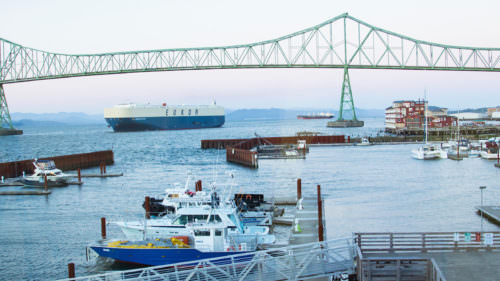For decades the Columbia River Maritime Museum has illuminated the stories and history of people who live where the largest river in the Pacific Northwest meets the Pacific Ocean. Three current exhibits showcase how deeply connected these communities are to the river and sea and how that has shaped their identity through time.
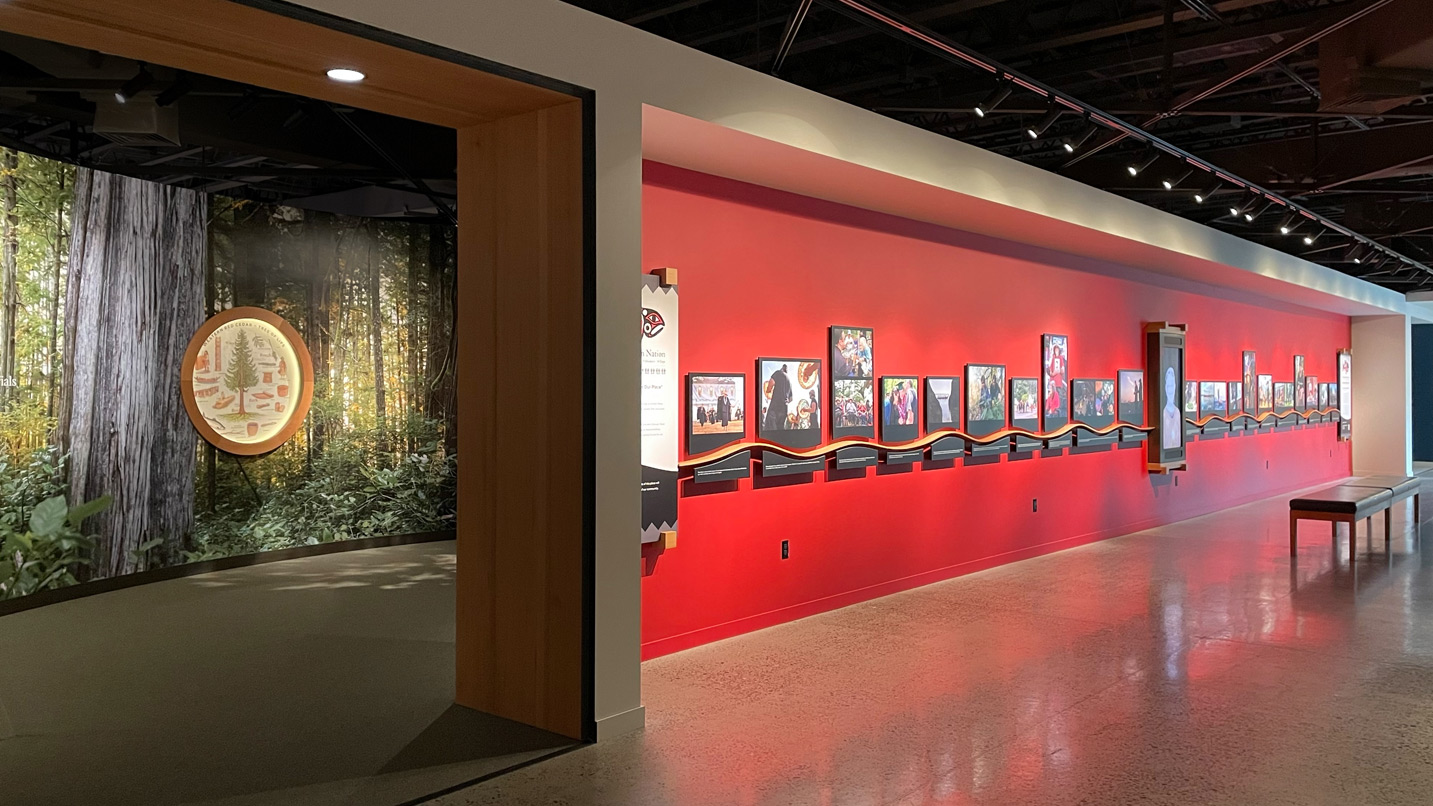
See Chinook Photography and Carvings
Learn about the culture and living maritime traditions of the Chinook Indian Nation through the lens of documentary photographer Amiran White in the long-term exhibit “ntsayka ilíi ukuk – This Is Our Place.” Created in collaboration with the Chinook Indian Nation—whose ancestral lands sit near the mouth of the Columbia River, stretching from Astoria to Tillamook Head and across the river—this exhibit features nearly two dozen remarkable photographs of people from a tribe that has inhabited the Pacific Northwest since time immemorial.
White has worked with the Chinook Indian Nation for more than a decade, documenting their efforts to preserve cultural lifeways and pursue federal recognition. In this exhibit, her luminous photos include portraits of Chinook ceremonies and family life, including a mother and daughter foraging in coastal forests, an intertribal canoe journey and the first salmon ceremony.
“Cedar & Sea: The Maritime Culture of the Indigenous People of the Pacific Northwest Coast” also showcases the strength and versatility of coastal tribes with an immersive and interactive exhibit. Highlights include video portraits from tribal members who share how techniques and cultural knowledge have been preserved through generations, as well as a wondrous 24‑foot canoe carved by Tla‑o‑qui‑aht Elder Joe Martin from a single cedar trunk.
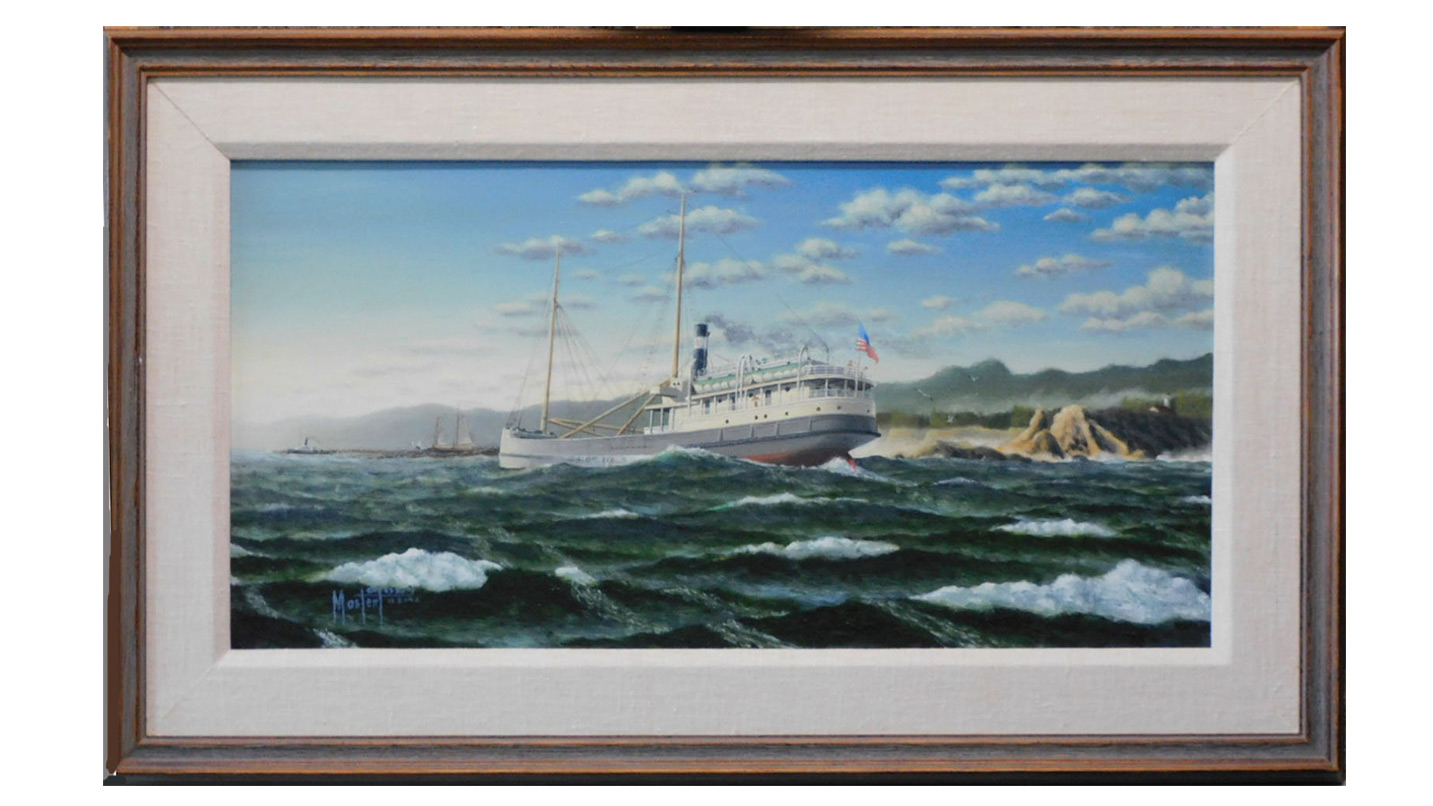
Marine Paintings Illuminate Life at Sea
Get a sense of life on the water when walking through the Pacific Rim Institute of Marine Artists exhibit on display through the end of 2025. Founded in 2016, the Pacific Rim Institute of Marine Artists brings together fine artists from countries bordering the Pacific Ocean using art about the sea as a common thread.
In this exhibit, you’ll see 25+ marine-themed paintings created in either oil or watercolor — some so expressive and transportive you can practically smell the salty sea air. Look for paintings by Steve Hu and Buck Braden for immersive scenes of magnificent boats conquering stormy seas and slice-of-life scenes at fishing ports.
Artist Coral Sumner Lehtinen captures luminous moments with First Nations coastal people. Both of her featured paintings are a tribute to the Chinook Nation. One piece titled “Git Hoan” means “people of the salmon,” while “We Are Still Here” is inspired by the photography of Amiran White. Charles Fawcett, a former Merchant Marine and yachtsman who has cruised boats of all sizes in oceans around the world, portrays the Columbia River Bar Pilots with keen detail in oil painting, while artist Robert Tandecki’s moody watercolor “The Birds” frames the nostalgic beauty of a working fishing port.
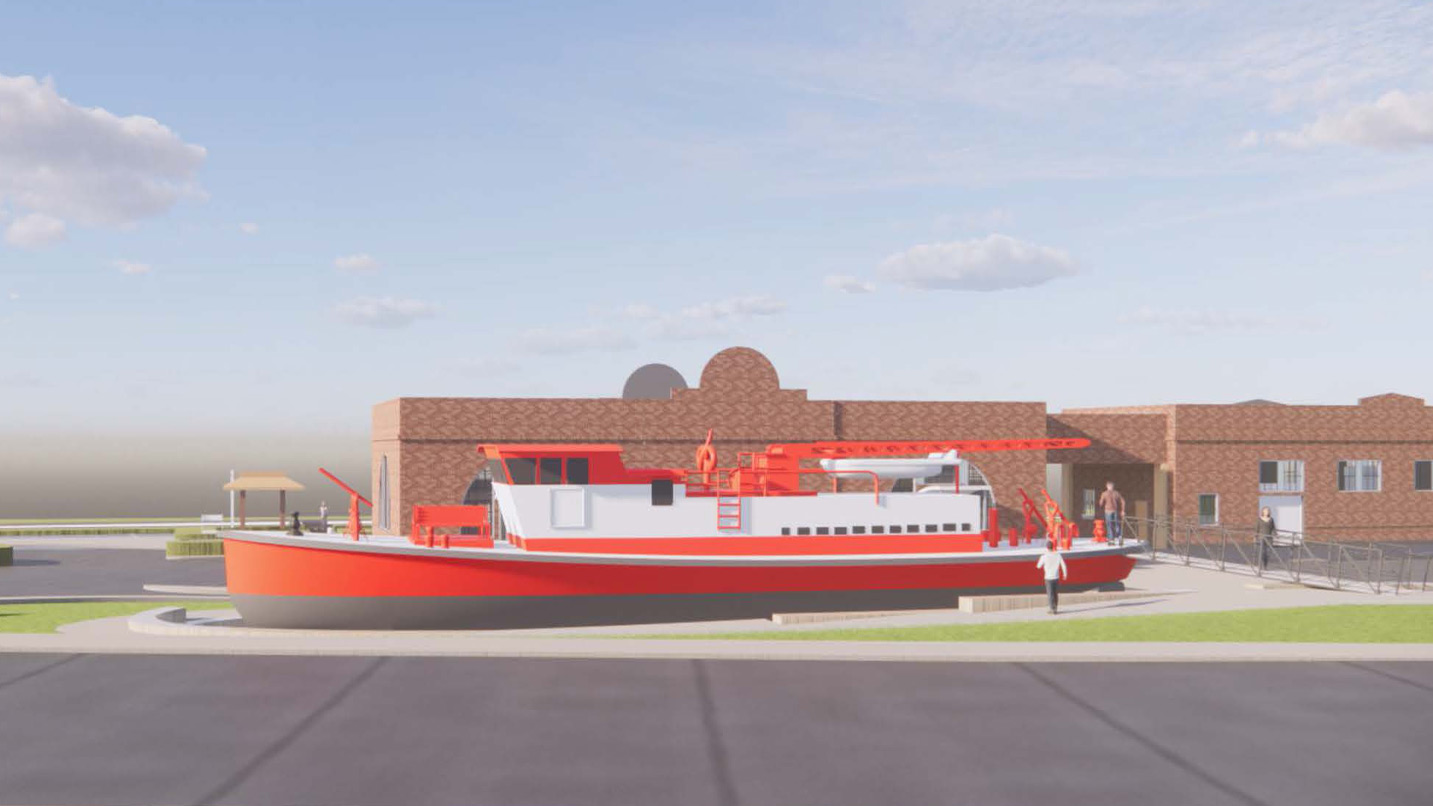
Experience Historic Vessels Below Deck
Even on misty days, you can see the electric-red Lightship Columbia docked just outside the museum. Stretching 128 feet long, the historic vessel functioned as a floating lighthouse, stationed at the mouth of the Columbia River for 28 years, from 1951 to 1979.
Traditional lightships like this were anchored in areas where it was impractical to build a lighthouse due to deep waters and chaotic currents. In Astoria the Lightship Columbia marked the river’s entrance, one of the most dangerous stretches of water in the world.
Serving as a visual beacon, the lightship emitted a bright, high-intensity light along with radio signals that provided critical navigation aids in storms and fog, helping vessels safely enter and exit the turbulent river. You can climb aboard this National Historic Landmark and see where sailors would cook, eat, sleep and work.
Head to the museum’s “Crossing the Bar: Perilous Passage” exhibit to see videos that illustrate why the Columbia River Bar is one of the most dangerous bar crossings on the planet, along with captivating scenes of the U.S. Coast Guard and Columbia River Bar Pilots in action. (Every day bar pilots get dropped onto the deck of massive cargo ships by helicopter to help steer them through the perilous waterway where the Columbia River meets the Pacific Ocean.)
If You Go:
If you’re curious to learn more about life on the water, mark your calendar for spring 2026, when another storied vessel arrives at the museum. The Portland David Campbell Fireboat, an iconic century-old boat that fought fires and made rescues along the Willamette River from 1927 to 2021, was recently gifted to the museum and will soon be open for visitors.
You can also experience upcoming exhibits, the permanent collection and more on the Bloomberg Connects app, a virtual guide and planning tool for cultural institutions that’s free to use. This significant connector to arts and culture will bring thousands of works of art, hundreds of videos with curators and experts, and countless stories of creativity to culture lovers around the world.

